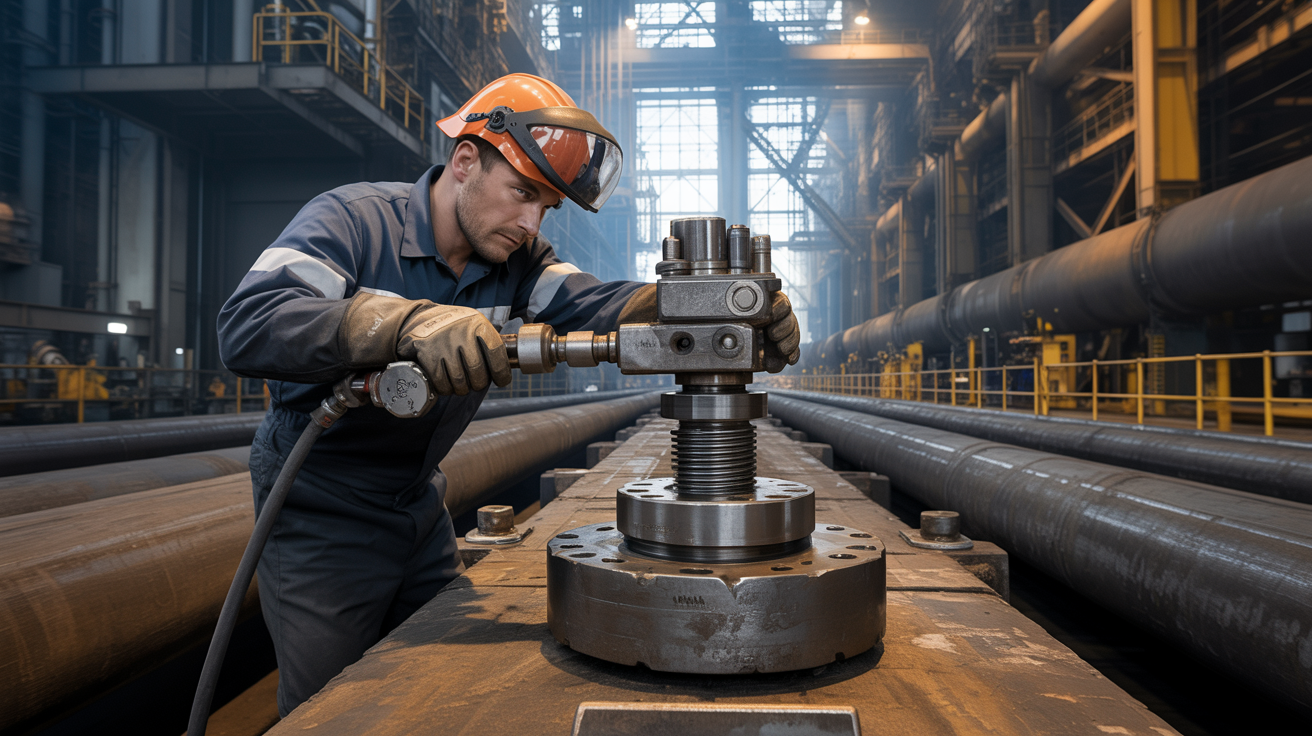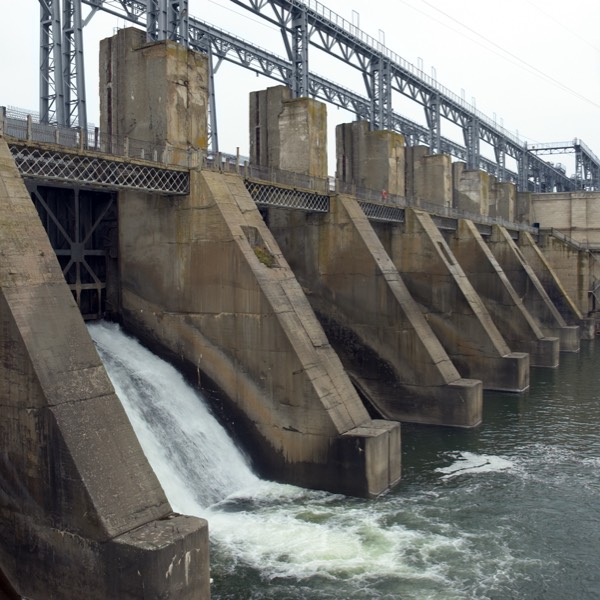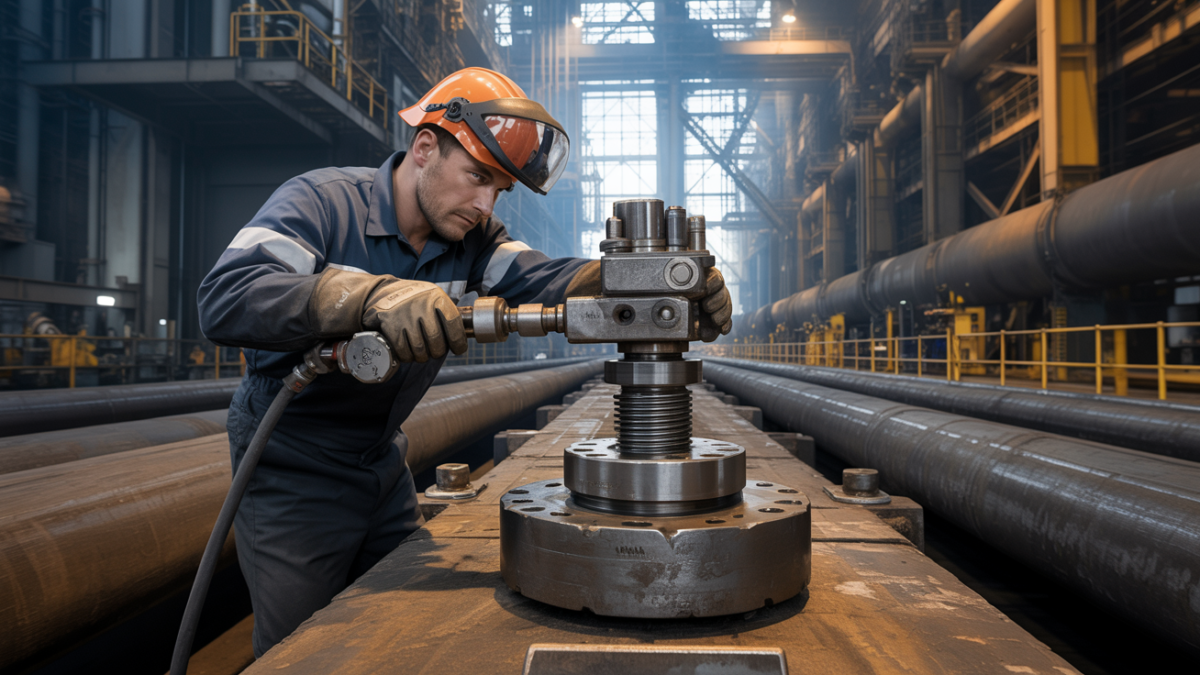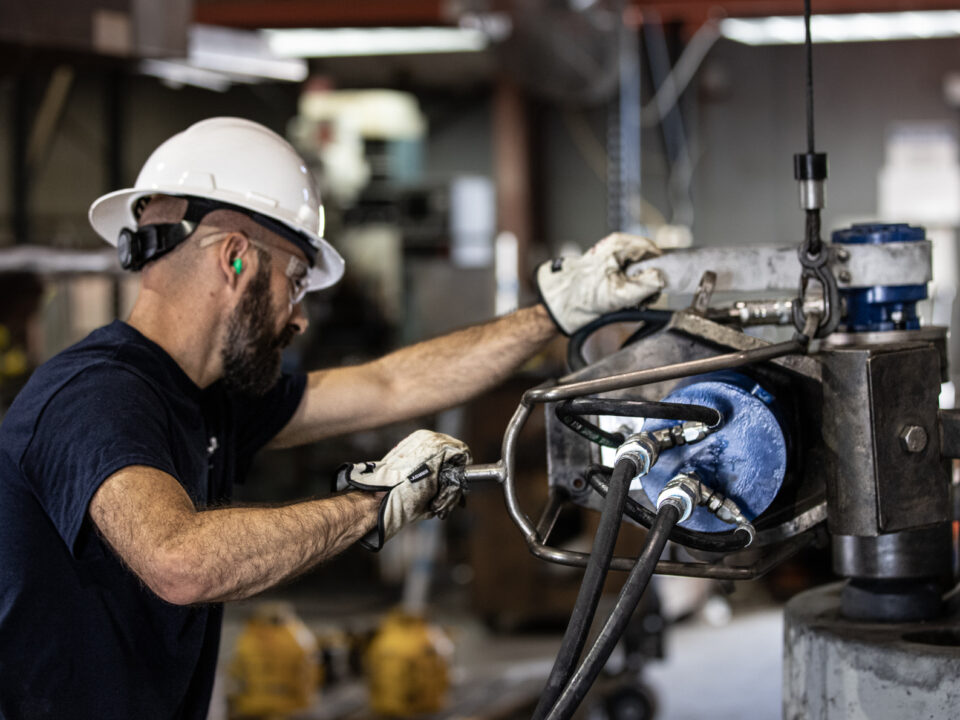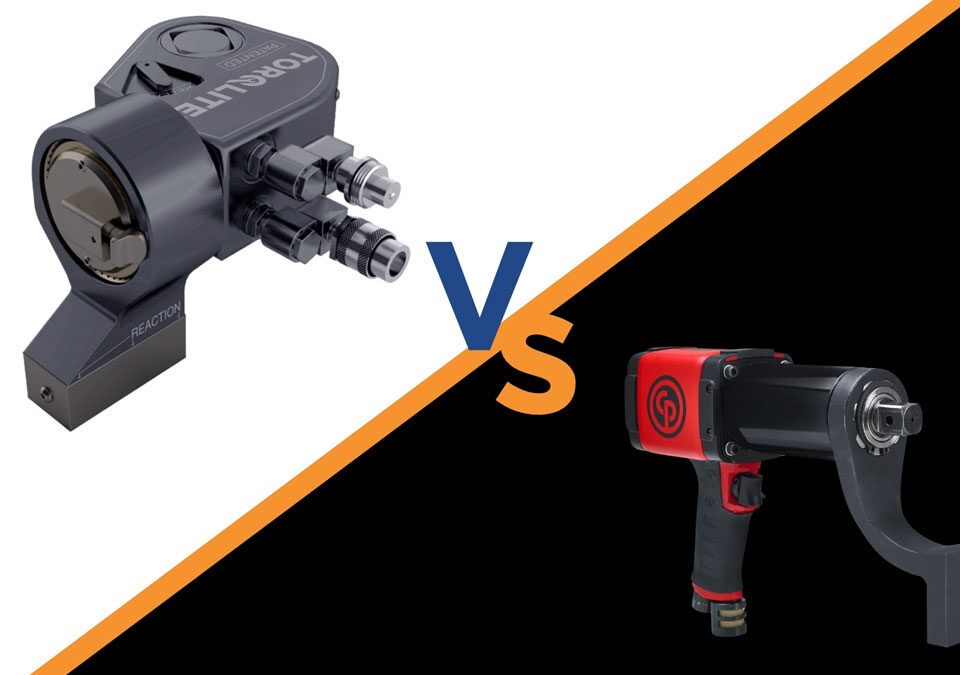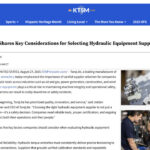
TorqLite Shares Key Considerations for Selecting Hydraulic Equipment Suppliers
November 6, 2025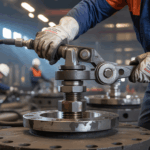
How Hydraulic Torque Wrenches Work: The Complete Technical Guide
November 27, 2025You’re standing at a bolting job, wrench in hand, and wondering if there’s a better way. Maybe your crew is burning hours on repetitive fastening tasks. Or perhaps you’re concerned about achieving the exact torque specifications required for critical pipeline connections.
The tool you choose can make or break your project timeline, safety record, and bottom line. But how do you know when it’s time to switch from manual tools to hydraulic torque wrenches?
We’ve spent over 40 years at TorqLite helping companies solve their toughest bolting challenges across the USA. Here’s what typically happens when businesses evaluate their options, along with the real-world factors that should guide your decision.
Why Torque Requirements Should Drive Your Tool Selection
Your torque needs are the starting point for any tool decision. If you’re working with fasteners requiring more than 1,000 ft-lbs of torque, manual tools start showing serious limitations.
Manual wrenches simply can’t deliver consistent results at higher torque levels. Operator fatigue sets in quickly, leading to variations in tightening force. One bolt might get 900 ft-lbs while the next receives 1,100 ft-lbs, even though you’re targeting 1,000 ft-lbs. These inconsistencies create real problems in applications where precision prevents leaks, equipment failures, or safety incidents.
Hydraulic torque wrenches handle torque ranges that would be impossible manually. Take our square drive hydraulic torque wrench as an example. The TorqLite SU-XL models deliver anywhere from 143 ft-lbs up to 54,905 ft-lbs at 10,000 PSI, with accuracy within ±3% and repeatability within ±1%.
Here’s what different torque levels typically mean for your tool choice:
- Under 500 ft-lbs: Manual tools work fine for occasional use
- 500-1,000 ft-lbs: Consider hydraulic if you’re doing repetitive work
- Over 1,000 ft-lbs: Hydraulic becomes necessary for accuracy and safety
- Over 5,000 ft-lbs: Hydraulic is your only practical option
For applications in oil and gas pipelines, construction equipment assembly, or manufacturing where bolt integrity matters, the precision of hydraulic tools becomes non-negotiable. When a flange connection failure could mean environmental damage or production shutdowns, that ±3% accuracy makes a measurable difference.
How to Match Tool Capacity to Your Bolting Specs
Not all hydraulic wrenches are built the same. You’ll want to match your tool’s capacity to your specific bolt sizes and torque requirements.
Here’s a breakdown of the TorqLite SU-XL series capacities:
| Model | Square Drive Size | Torque Range (ft-lbs) | Weight | Best For |
| SU-1XL | ¾” | 143-1,382 | 7 lbs | Small valve bonnets, light industrial |
| SU-3XL | 1″ | 262-2,921 | 14 lbs | Standard flanges, pump assemblies |
| SU-6XL | 1½” | 564-5,110 | 21 lbs | Medium pipeline connections |
| SU-11XL | 1½” | 1,038-10,793 | 36 lbs | Large flanges, heavy equipment |
| SU-30XL | 2½” | 2,638-25,804 | 91 lbs | Major pipeline work, industrial plants |
| SU-60XL | 2½” | 5,113-54,905 | 296 lbs | Extreme-duty applications |
The right model depends on your typical bolt sizes and the space you’re working in. A compact SU-1XL might be perfect for maintenance work, while the SU-60XL handles the heaviest bolting in refineries or offshore platforms.
If you’re unsure which model fits your application, reach out to us for a consultation. We can help you select the right tool based on your specific bolt specifications and working conditions.
The Real Safety Differences Between Manual and Hydraulic Tools
Safety concerns often push companies toward hydraulic solutions faster than any other factor.
Manual torque wrenches create multiple injury risks that add up over time. Operators applying high torque manually face muscle strain, joint stress, and repetition injuries. When you’re pushing 800 ft-lbs through a manual wrench, your body absorbs significant force. Do this dozens of times per day, and you’re looking at potential long-term health issues for your crew.
Pinch points represent another serious hazard with manual tools. Your hands and fingers come close to moving parts and bolt heads. In tight spaces, this risk multiplies. One slip can mean crushed fingers or worse.
Hydraulic torque wrenches eliminate most of these physical demands. The hydraulic system does the work while operators position the tool and monitor the process. Modern TorqLite designs like our patented unibody structures reduce the number of moving parts, which means fewer potential failure points.
Here’s what changes with hydraulic tools:
- Reduced physical exertion lowers fatigue-related accidents
- Minimal pinch points in properly designed tools
- Less exposure to side loading forces that can cause tool slippage
- Better control in awkward positions or overhead work
OSHA regulations under 29 CFR 1910 and 1926.302 require that power tools use fire-resistant hydraulic fluids and maintain secure connections. These standards exist because disconnections or fluid leaks can create hazardous situations. When you’re selecting hydraulic tools, verify they meet these requirements.
The square drive models we manufacture feature 96 reaction positions, giving operators safer angles to work from. Instead of fighting to position a manual wrench at an uncomfortable angle, you can find a secure reaction point that keeps your body in a better position.
What Current Regulations Mean for Your Tool Selection
USA regulations have tightened considerably for bolting in critical applications. If you’re working in petroleum, offshore, or construction sectors, staying compliant isn’t optional.
The API Spec 20E third edition now includes stricter quality controls for alloy and carbon steel bolting in petroleum industries. This specification addresses safety-critical applications where bolt failure could have catastrophic consequences.
For subsea work, 30 CFR 250 Subpart G mandates following API Specs 6A, 16A, and 17D. Preloads must fall between 67-73% of yield strength to exceed separation forces while limiting stress. These aren’t suggestions; they’re federal requirements.
ASTM F3125/F3125M-25 covers high-strength structural bolts with tensile strengths from 120-150 ksi. If you’re working with these fasteners, you need tools that can reliably achieve the specified preload without risking bolt failure.
Companies serving international projects should note that NORSOK M-001 limits hardness to 32 HRC for subsea bolts in corrosive settings. This standard specifically prohibits certain coatings that might seem like good ideas but create problems in marine environments.
Non-compliance can lead to project shutdowns, fines, and liability issues. More importantly, it puts workers and equipment at risk. If you’re uncertain about which standards apply to your work, consult with your compliance team or contact us for guidance.
How Hydraulic Tools Actually Speed Up Your Bolting Operations
Time is money on any job site. Hydraulic torque wrenches can improve efficiency by up to 30% in industrial settings, but that number depends on your specific application.
The time savings come from several factors. First, hydraulic tools complete each bolt cycle faster than manual methods. What might take three minutes manually could take 30 seconds with hydraulic equipment. Multiply that across 50 bolts on a flange, and you’re saving significant time.
Second, reduced operator fatigue means crews maintain consistent speed throughout the shift. With manual tools, the 30th bolt takes longer than the first because the operator is tired. Hydraulic tools deliver the same speed on bolt one and bolt one hundred.
Third, modern hydraulic wrenches minimize setup time. Features like slotted piston rods maintain 90° nut alignment, so you’re not constantly repositioning. The 360° swivels on many models let you work in confined spaces without fighting the tool’s orientation.
A quote from Texas Controls captures this well: “Hydraulic torque wrenches are fundamental tools for minimizing tightening times in any industry.”
However, hydraulic tools aren’t always faster for every job. Small projects with just a few bolts might not justify the setup time. You need to connect hoses, check hydraulic pressure, and position the tool. For quick, low-volume work with modest torque requirements, a manual tool might actually be more efficient.
Where hydraulic tools shine:
- Large-scale bolting projects with multiple connections
- Repetitive tasks where consistency matters
- High-torque applications that would exhaust operators
- Critical bolting where accuracy can’t be compromised
Where manual tools still make sense:
- Occasional maintenance with low torque needs
- Quick adjustments or single-bolt tasks
- Locations without hydraulic pump access
- Budget-conscious operations with minimal bolting work
Real Applications Where Tool Choice Matters Most
Different industries face unique bolting challenges. Here’s where we typically see the hydraulic versus manual decision play out.
Oil and gas operations deal with high-pressure systems where leaks aren’t acceptable. Pipeline flanges, wellhead connections, and refinery equipment all require precise, consistent torque. A single under-torqued bolt in a flange assembly can lead to leaks, environmental damage, and costly shutdowns. Hydraulic tools with documented accuracy become essential.
Construction and heavy equipment assembly involves large structural bolts with high torque requirements. Tower cranes, bridges, and industrial buildings use fasteners that simply can’t be properly tightened manually. The volume of bolting work also makes efficiency critical to keeping projects on schedule.
Manufacturing facilities need consistent quality across thousands of assemblies. Whether you’re building turbines, compressors, or industrial machinery, variations in bolt preload create warranty claims and field failures. Hydraulic tools deliver the repeatability that quality control demands.
Hydro industry maintenance presents unique challenges with underwater or difficult-access bolting. Square drive hydraulic wrenches eliminate pinch points and enable safer operation in these demanding conditions. The 96 reaction positions on models like ours allow technicians to find secure mounting points even in awkward locations.
A Tritorc specialist explains: “Hydraulic torque machines provide safety and accuracy which ensures efficient operation.”
For applications not covered here, your best approach is to consult with bolting specialists who can evaluate your specific requirements. We help companies assess factors like access constraints, torque specs, bolt quantities, and working conditions to recommend the right solution.
The Investment Decision: When Hydraulic Tools Pay Off
Cost matters, and manual tools definitely cost less upfront. A quality manual torque wrench might run a few hundred dollars, while hydraulic systems start in the thousands.
But looking only at purchase price misses the bigger picture. Here’s what you should actually consider.
Labor costs add up quickly. If a hydraulic tool saves even 30 minutes per day on bolting tasks, that’s 2.5 hours per week or 130 hours per year. At typical industrial labor rates, you’re looking at thousands in savings annually. The productivity gains from a 30% efficiency improvement can pay for hydraulic equipment within the first year on many projects.
Rework and failure costs hurt more than initial tool expenses. When manual torquing leads to inconsistent preload, you risk leaks, equipment failures, or safety incidents. A single flange leak that shuts down production for a day can cost more than an entire set of hydraulic tools.
Worker compensation and injury prevention represent another cost factor. Repetitive strain injuries from manual torquing create workers’ compensation claims, lost time, and potential staffing challenges. Reducing these risks has measurable financial value.
Maintenance requirements for hydraulic tools do add ongoing costs. You’ll need to service hydraulic pumps, replace hoses periodically, and maintain the tools according to manufacturer specifications. Modern designs with fewer moving parts help reduce these costs, but they’re still real considerations.
What Makes Hydraulic Tools Worth the Maintenance
Hydraulic torque wrenches do require more maintenance than manual tools. You can’t just throw them in a toolbox and forget about them.
Regular maintenance includes:
- Checking hydraulic fluid levels and quality
- Inspecting hoses for wear or damage
- Verifying pressure settings on pumps
- Calibrating tools to maintain accuracy
- Cleaning and lubricating components
These tasks take time and sometimes require specialized knowledge. If your crew lacks hydraulic equipment experience, plan for training.
However, innovations in hydraulic tool design have made maintenance more manageable. Our patented unibody structures reduce the number of parts that can fail or require adjustment. Co-axial hoses, a 2025 innovation, improve both productivity and safety by simplifying connections and reducing leak points.
Schmidt Tools notes: “Based on my experience, I recommend you choose hydraulic torque wrenches with documented accuracy, advanced materials, proven durability, and ergonomic designs.”
Quality matters significantly in maintenance costs. Well-designed tools with better materials need less frequent service and have longer lifespans. When evaluating hydraulic options, ask about warranty coverage, parts availability, and service support.
We offer extended warranty options and maintenance plans specifically because we understand these concerns. Proper support makes hydraulic tool ownership practical even for companies new to this equipment.
Making the Right Choice for Your Specific Application
You’ve got the information, but how do you actually decide for your situation?
Start by honestly assessing your torque requirements. If you’re regularly working above 1,000 ft-lbs, hydraulic tools move from “nice to have” to “should have.” Above 5,000 ft-lbs, they become necessary.
Next, evaluate your project scale. How many bolts are you tightening per week? If it’s just occasional maintenance with a handful of fasteners, manual tools might suffice. But if you’re running continuous bolting operations with dozens or hundreds of connections, the efficiency gains from hydraulic equipment justify the investment.
Consider your accuracy requirements. In critical applications where bolt preload directly affects safety or system performance, the ±3% accuracy and ±1% repeatability of hydraulic tools aren’t luxuries. They’re requirements that manual methods simply can’t match.
Think about your crew’s physical workload. If operators are showing signs of fatigue, strain, or repetition injuries from manual torquing, that’s a clear signal to switch.
Questions to ask yourself:
- What’s our typical torque range across all applications?
- How many bolts do we tighten in an average month?
- What happens if a bolt fails or a connection leaks?
- Are our current methods creating any safety concerns?
- Can our crew handle hydraulic equipment maintenance?
If you’re still uncertain, we can help evaluate your specific needs. Share your bolt specifications, project scope, and working conditions with us, and we’ll provide recommendations based on what we’ve learned over four decades in bolting solutions.
The right tool depends on your unique circumstances. But whether you choose hydraulic or manual, the goal stays the same: safe, efficient, and reliable bolting that keeps your operations running.
Get the Right Tools for Your Toughest Bolting Challenges
Choosing between hydraulic and manual torque tools isn’t about picking the most expensive option or following trends. It’s about matching your tool to your actual needs.
For high-torque applications above 1,000 ft-lbs, repetitive bolting work, or critical connections where precision matters, hydraulic torque wrenches offer measurable advantages in accuracy, safety, and efficiency. The investment pays off through faster completion times, reduced injury risks, and consistent quality that prevents costly failures.
For occasional, low-torque tasks under 500 ft-lbs, manual tools remain a practical choice that gets the job done without unnecessary complexity.
At TorqLite, we’ve been solving bolting challenges for over 40 years with innovative hydraulic solutions. Our ISO 9001 certified, women-owned business holds over 20 patents for tools designed to handle the world’s toughest bolting applications.
Whether you need compact tools for valve maintenance or heavy-duty equipment for major pipeline projects, we can help you find the right fit. Contact us to discuss your specific requirements and get expert guidance on selecting tools that improve your operations.
Frequently Asked Questions
What torque level requires switching from manual to hydraulic tools?
Generally, you should consider hydraulic tools when working above 1,000 ft-lbs regularly. While manual tools can technically reach higher torque levels, achieving consistent accuracy and preventing operator fatigue becomes difficult beyond this point. For occasional work between 500-1,000 ft-lbs, evaluate based on frequency and precision requirements. Above 5,000 ft-lbs, hydraulic tools become practically necessary.
How accurate are hydraulic torque wrenches compared to manual tools?
Quality hydraulic torque wrenches achieve accuracy within ±3% and repeatability within ±1%, traceable to N.I.S.T. standards. Manual tools depend heavily on operator technique, fatigue levels, and conditions, leading to variations that can exceed 10-15% in demanding applications. For critical bolting where consistent preload prevents failures, hydraulic tools provide significantly better precision.
What maintenance do hydraulic torque wrenches require?
Hydraulic tools need regular fluid level checks, hose inspections, pressure verification, and periodic calibration. Modern designs with unibody structures and fewer moving parts reduce maintenance frequency, but you’ll still need to service pumps, replace worn hoses, and follow manufacturer guidelines. Plan for training if your crew is new to hydraulic equipment, and consider maintenance plans for ongoing support.
Are hydraulic torque wrenches worth the cost for small operations?
For small operations with occasional, low-torque bolting needs, manual tools often make more financial sense. However, if you’re dealing with high-torque applications, repetitive work, or critical connections where failure carries significant costs, hydraulic tools can pay for themselves through labor savings and reduced rework. Calculate your actual bolting volume, potential downtime costs, and injury risks to make an informed decision.
What industries benefit most from hydraulic torque wrenches?
Oil and gas, construction, manufacturing, and hydro maintenance see the greatest benefits. These industries involve high-torque applications, large-scale bolting projects, and critical connections where leaks or failures create safety hazards and expensive shutdowns. Any operation requiring consistent, high-precision bolting with torque levels above 1,000 ft-lbs typically benefits from hydraulic tools.

















